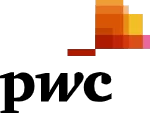
- Published 2024
- No of Pages: 200
- 20% Customization available
Middle East Hemodialysis Market Research Report, Analysis and Forecast
Middle East Hemodialysis Market Synopsis
The demand for the hemodialysis market is on the rise in many countries, including in the Middle East. Some factors contributing to this growth include:
- Increasing prevalence of chronic kidney disease (CKD): The global incidence of CKD is increasing due to factors such as an ageing population, rising rates of obesity and diabetes, and improved diagnosis. In the Middle East, the incidence of diabetes is particularly high, which has led to an increase in the number of patients with kidney failure.
- Growing demand for dialysis services: As the number of individuals with ESRD increases, there is a corresponding increase in the demand for dialysis services. In the Middle East, the number of dialysis centres and dialysis patients has been growing steadily in recent years.
- Increased healthcare spending: In many Middle Eastern countries, governments have been increasing their investment in healthcare infrastructure, including dialysis centres, to provide better access to care for their citizens.
- Technological advancements in dialysis equipment: The hemodialysis market has benefited from advances in technology, which have led to the development of more efficient and user-friendly dialysis machines and water treatment systems.
- Growing awareness of kidney disease: In the Middle East, there is a growing awareness of the importance of kidney health, which is helping to drive demand for dialysis services.

These factors have combined to create a favourable environment for the growth of the hemodialysis market in the Middle East. The market is expected to continue to grow as the need for dialysis services continues to increase and new technologies are developed to improve the effectiveness and efficiency of dialysis treatment.
- In the United Arab Emirates (UAE), the number of dialysis patients has increased by 30% in the last decade, and the number of dialysis centres has more than doubled in the same period.
- In Saudi Arabia, the number of dialysis patients has increased by over 50% in the last 5 years, and the government has committed to investing in the development of new dialysis centres to meet this growing demand.
- In Iran, the number of dialysis patients has increased by more than 200% in the last decade, and the government has launched several initiatives to improve access to dialysis services, including the construction of new dialysis centres and the provision of dialysis equipment to regional hospitals.
This data shows that the demand for dialysis services is growing rapidly in the Middle East, driven by factors such as the increasing prevalence of chronic kidney disease, the growing awareness of kidney health, and the increasing investment in healthcare infrastructure by governments. The growth of the hemodialysis market in the region is expected to persist in the coming years, providing new opportunities for businesses operating in this space.
Middle East Hemodialysis Market: Overview
Hemodialysis is a medical treatment used for individuals with kidney failure to remove excess waste and fluid from the body. It is performed using specialized equipment such as dialysis machines, hemodialysis water treatment systems, and consumables like dialyzers and catheters. The blood is pumped from the patient’s body through a dialyzer, where it is cleaned, and then returned to the patient.
Hemodialysis is a life-saving treatment that is used to treat individuals with end-stage renal disease (ESRD), also known as chronic kidney failure. In ESRD, the kidneys can no longer function effectively to remove waste and excess fluid from the body.
During hemodialysis, a dialysis machine is used to filter the blood outside the body. Blood is pumped from the patient’s body through a dialysis machine, which contains a semi-permeable membrane called a dialyzer. The dialyzer acts as an artificial kidney, removing waste, excess fluid, and electrolytes from the blood. The cleaned blood is then returned to the patient’s body.
Hemodialysis requires access to the bloodstream, which can be achieved through a surgical procedure to create an arteriovenous (AV) fistula or an AV graft. Alternatively, a catheter can be used for temporary or short-term access.
Furthermore, Hemodialysis water treatment systems are used to purify the water that is used during hemodialysis to ensure that it is free from bacteria and contaminants. The water is treated with a combination of filters, reverse osmosis, and ultraviolet light.
In addition, Consumables, such as dialyzers and catheters, must be used in each hemodialysis session and must be replaced regularly to maintain the safety and efficacy of the treatment.
Overall, hemodialysis is an essential treatment for individuals with ESRD and helps to keep them healthy by removing waste and excess fluid from the body, thereby preventing complications and improving their quality of life.
Saudi Arabia Hemodialysis Market Synopsis
The Saudi Arabia hemodialysis market is also growing rapidly due to similar factors to those driving growth in the UAE. The prevalence of chronic kidney diseases is high in Saudi Arabia, and there is a need for improved access to dialysis services. The government has taken steps to improve access by providing subsidies and insurance coverage for dialysis treatments. Additionally, Saudi Arabia has invested heavily in healthcare infrastructure and technology, which has enabled more efficient delivery of dialysis services.
UAE Hemodialysis Market Synopsis
The UAE hemodialysis market is growing rapidly due to the increasing prevalence of chronic kidney diseases in the region. The UAE has one of the highest rates of kidney failure in the world, with an estimated 10,000 people suffering from end-stage renal disease. This has led to a surge in demand for hemodialysis services, as it is the most effective treatment for this condition. The UAE government has also taken steps to improve access to dialysis services by providing subsidies and insurance coverage for dialysis treatments. Additionally, the government has invested heavily in healthcare infrastructure and technology, which has enabled more efficient delivery of dialysis services.
Middle East Hemodialysis Market: Segmentation
The middle east hemodialysis market has been segmented into products and modalities.
Based on the product type, the middle east hemodialysis market is split up into Equipment and Consumables. In 2021, Consumables held a considerable revenue share. In 2021, consumables held a considerable revenue share. The use of consumables helps ensure patient safety and hygiene, facilitates the efficient delivery of medical services, and supports the accurate and effective diagnosis of medical conditions. Additionally, the frequent use of consumables in healthcare helps reduce the risk of cross-contamination, ensures the availability of necessary supplies, and allows for the convenient disposal of used materials. There are a wide variety of medical consumables and equipment used in healthcare, including syringes, needles, sutures, staples, packaging, tubing, catheters, medical gloves, gowns, masks, adhesives and sealants for wound dressing, and many other devices and tools.
Based on Applications, the market is classified as Conventional Long-term Hemodialysis, Short Daily Hemodialysis, and Nocturnal Hemodialysis. In 2021, the segment with the highest revenue share was conventional long-term hemodialysis. This is because it is the most commonly used form of dialysis and because it is more cost-effective than other forms of dialysis. Additionally, it has fewer side effects than other forms and provides better long-term patient outcomes. Conventional long-term hemodialysis involves the use of long-term vascular access, such as an arteriovenous fistula or an arteriovenous graft, to provide a steady flow of blood to the dialyzer. The dialyzer then removes waste products, excess fluids, and electrolytes from the blood and returns the cleaned blood to the patient.
Recent Developments
- In March 2022, NIPRO Medical Corporation established a strong presence in the Middle Eastern market and launched several dialysis products in the region, including the “NIPRO Home Hemodialysis System,” which allows patients to perform dialysis treatments at home. NIPRO has also established partnerships with local healthcare providers in the Middle East to expand its reach and improve access to dialysis services.
- In August 2022, Fresenius Medical Care is a provider of dialysis services and products in the Middle East and has recently expanded its telemedicine services in the region. The company has also opened several new dialysis centers in the Middle East in recent years, allowing it to meet the growing demand for dialysis services.
- Baxter International Inc. is a leading provider of dialysis products in the Middle East and has recently launched several new dialysis machines in the region, including the “Baxter HomeHemodialysis System.” The company has also established partnerships with local healthcare providers to improve access to dialysis services in the Middle East.
In 2022, there were several acquisitions in the Middle East hemodialysis company space.
- In April 2022, Saudi Arabia-based Al Borg Medical Laboratories acquired a majority stake in the Bahrain-based hemodialysis company, Al Hilal Medical Services. The acquisition was part of Al Borg’s strategy to expand its presence in the Middle East hemodialysis market.
- In June 2022, the UAE-based healthcare provider, NMC Healthcare, acquired a majority stake in the Saudi-based hemodialysis company, Al-Ahlia Medical Services. The acquisition was more than a strategic move for NMC Healthcare, as it also provided them with access to Al-Ahlia’s advanced technology and expertise in the hemodialysis space.
- In August 2022, the UAE-based healthcare provider, VPS Healthcare, acquired a majority stake in the Kuwait-based hemodialysis company, Al-Qadisiya Medical Services. The acquisition was part of VPS Healthcare’s strategy to expand its presence in the Middle East hemodialysis market.
- In October 2022, the UAE-based healthcare provider, Aster DM Healthcare, acquired a majority stake in the Qatar-based hemodialysis company, Al-Rayyan Medical Services. The acquisition was part of Aster DM Healthcare’s strategy to expand its presence in the Middle East hemodialysis market.
- In December 2022, the UAE-based healthcare provider, Al Khayyat Investments, acquired a majority stake in the Oman-based hemodialysis company, more Al-Nahda Medical Services. The acquisition was part of Al Khayyat Investments’ strategy to expand its presence in the Middle East hemodialysis market.
The Middle East Hemodialysis Market is segmented as follows
By Product Type
- Equipment
- Dialysis Machines
- Hemodialysis Water Treatment Systems
- Other
- Consumables
- Dialyzers
- Catheters
- Hemodialysis
- Other
By Modality
- Conventional
- Long-term Hemodialysis
- Short Daily Hemodialysis
- Nocturnal hemodialysis
- Others
By Region
- The Middle East
- Saudi Arabia
- UAE
- Qatar
- Kuwait
- Oman
- Rest of the Middle East
“Every Organization is different and so are their requirements”- Datavagyanik
Companies We Work With






Do You Want To Boost Your Business?
drop us a line and keep in touch

